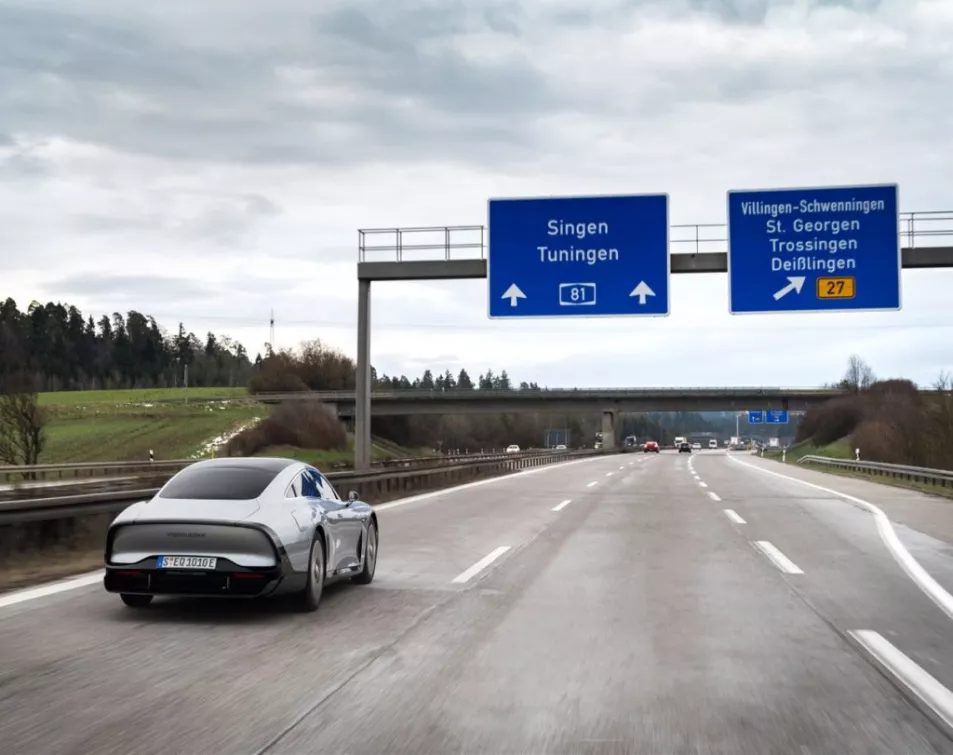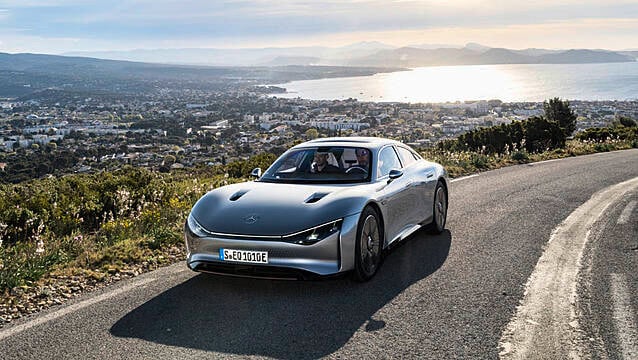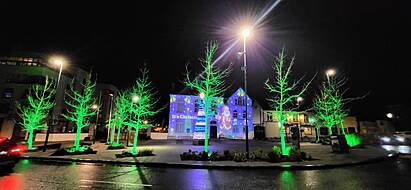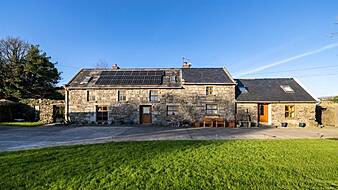Mercedes-Benz aims to produce electric cars consuming as little as 10 kilowatt hours of energy per 100 km, its chief technology officer (CTO) said on Thursday, a third more efficient than the current average for electric cars.
Speaking as the carmaker celebrated the successful test drive of its EQXX prototype vehicle over more than 1,000 km from Sindelfingen in Germany to the Cote d'Azur on a single charge, CTO Markus Schaefer said efficient design was key to maximising an electric car's range.
"First we optimise efficiency, and then we can see how many battery modules we put in the car," Schaefer said at a media roundtable, adding that customers should be able to decide the size of the battery they want based on their needs.
Carmakers from Mercedes-Benz to Tesla to China's Nio are in a neck-to-neck race to produce higher range cars that dispel consumer anxiety over the lack of widespread charging infrastructure for electric vehicles.

In many ways, it would be easy enough to create an electric car that could cover 1,000km on one charge of its battery. The simplest version would just be to make a car with a massive battery, but then you’re getting into decreasing circles of weight, cooling issues, complexity, and recharging times.
What Mercedes has done is to create a car — the Vision EQXX, a one-off prototype for now — that can do 1,000km on one charge of a conventionally-sized battery. True, its 100kWh battery isn’t the smallest, but it’s comparable to batteries fitted to existing production models such as Audi’s e-Tron GT, Tesla’s Model S and Model X, and Mercedes’ own luxury EQS saloon. The difference is that the EQXX’s battery is much, much smaller — thanks to input from Mercedes’ own Formula One team, the EQXX battery has almost the same power as the EQS’, but takes up half the volume and is lighter by a third.
Aerodynamic
The EQXX is also spectacularly aerodynamic. With a drag coefficient of just 0.17Cd, it’s slipperier by far through the air than the next-most aero-friendly car, which is actually Merc’s own EQS once again. That luxury saloon has a drag figure of 0.20Cd, and the EXXX’s frontal area — the amount of metalwork that it has to shove through the air — is also small at 2.12-metres squared. That’s not all; the EQXX even has bodywork that extends at the rear, at higher cruising speeds, so as to make it even more aerodynamic, while the rear wheels are 50mm narrower than the fronts, so that effectively they run inside the airflow generated by the front wheels.
All of this is clever stuff, but thus far it was strictly a laboratory project, and the car’s claimed 1,000km range was not proven in the real world. Until now…
Mercedes has just driven its EQXX in the real world, and it’s not just been for a spin around the block. It’s been driven from Mercedes’ home town in Stuttgart all the way to Cassis, on the Côte d’Azur on the sunny south coast of France. Along the way, it coped with temperatures close to freezing, high Alpine passes, and 140km/h blasts along the Autobahn.
At the end of the trip, the EQXX had covered 1,008km in 11hrs and 30mins, and still had a 15 per cent charge left in its battery, good for around 140km. And there was no sneaky top-ups en route, either. The car’s charging flap was sealed by independent adjudicators from the TÜV, Germany’s weights-and-measures experts.
Part of that remarkable range was assisted by the car’s solar roof. Once free of the 3-degrees Celsius weather (with drizzle) in Stuttgart, the solar roof came into its own once south of the Alps, and Mercedes reckoned that it contributed 25km of extra range to the total.

“We did it! Powering through more than 1,000 kilometres with ease on a single battery charge and a consumption of only 8.7 kWh/100 km in real-world traffic conditions. The Vision EQXX is the most efficient Mercedes ever built. The technology programme behind it marks a milestone in the development of electric vehicles. It underpins our strategic aim to ‘Lead in Electric’,” said Ola Källenius, Mercedes’ chairman of the board.
Counter claim
It’s a remarkable achievement, but Mercedes is apparently not the only one to manage four-figure ranges from one battery charge. While Mercedes’ route to a four-figure range is taking an existing 100kWh battery and making the car around it as efficient and aerodynamically slick as possible, Our Next Energy’s (ONE) approach is rather more sledge-hammer-like — add more battery capacity. About double the battery capacity in fact.
ONE, based in Michigan, has already caught the eyes (and wallets) of such blue-chip investors as BMW, Bill Gates, and Jeff Bezos. Such investment isn’t a guarantee of success or innovation, of course — companies and individuals regularly make broad investments in small startups, hoping that one of them hits the big time — but ONE’s tech does at least seem to have made some real-world progress.
ONE has retrofitted a Tesla Model S saloon with its own battery, known as Gemini. That battery has a total energy capacity of 203kWh, which is give-or-take double what the standard Tesla battery offers. It has a total energy density of 416wh-per-litre. ONE claims that it has managed to get an impressive 752-miles, or 1,212km, out of a single charge of the battery, in an on-road test driven at an average speed of 88km/h.
That figure was, according to ONE, backed up by a subsequent laboratory test on a rolling road, which at an average 88km/h saw a one-charge range of 1,422km. The battery fits into the same physical space as the existing Tesla battery, but ONE has not provided any figures to indicate whether or not it is heavier than the original power source.
“We want to accelerate the adoption of electric vehicles by eliminating range anxiety, which holds back most consumers today,” said Mujeeb Ijaz, founder and chief executive of ONE. “We are now focused on evolving this proof-of-concept battery into a new product called Gemini, which will enable long distance trips on a single charge while improving cost and safety using sustainable materials.”
Ijaz claims that: “Today's electric vehicles have lower adoption due to range limitations. Even the highest range electric vehicles sold today lack the surplus energy required to overcome factors such as high-speed driving, extreme weather, mountainous terrain, or towing trailers in real world conditions. These factors can lead to a loss of more than 35 per cent of rated range, causing inconvenience and anxiety on road trips. The ONE Gemini battery aims to eliminate range as a barrier to electric vehicle adoption by doubling the available energy on board in the same package space.
“Until now, the industry approach to solving the range issue is to add more charging stations. However, relying on fast charge stations presents other obstacles, such as waiting in long lines, not recharging as fast as advertised, and being limited to a partial charge, which results in the need to stop every 150-miles.”
Ijaz’s plan is that ONE will put a smaller battery, a 79kWh unit called Aries, into production this year, before bringing Gemini to the market in 2023.







